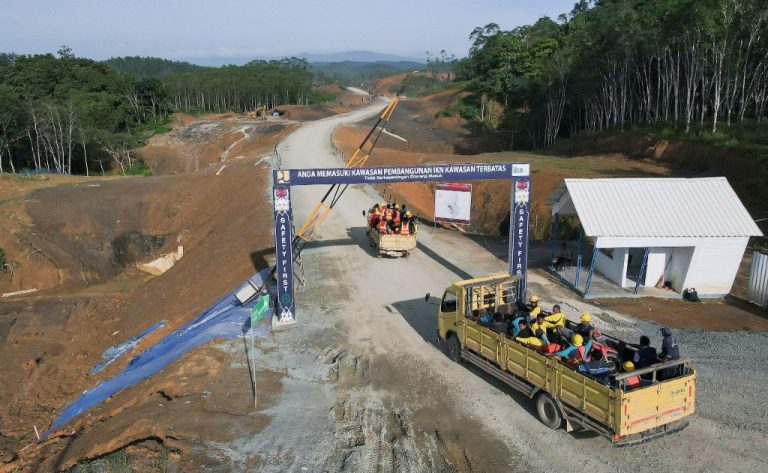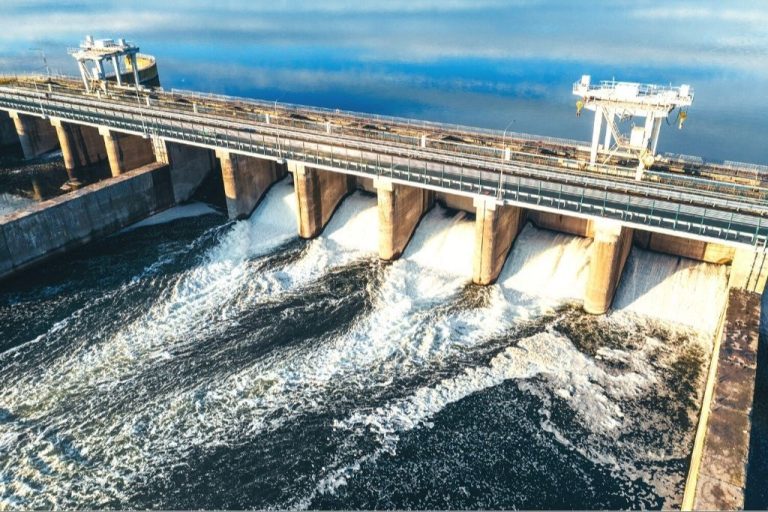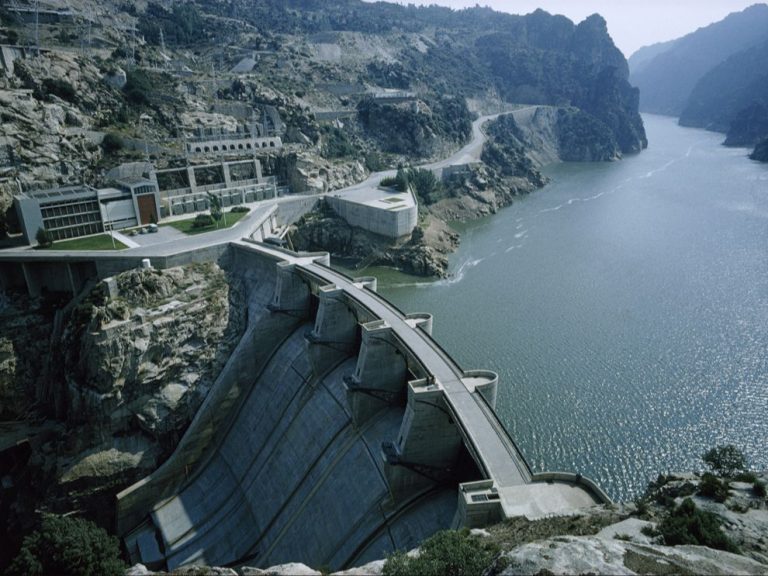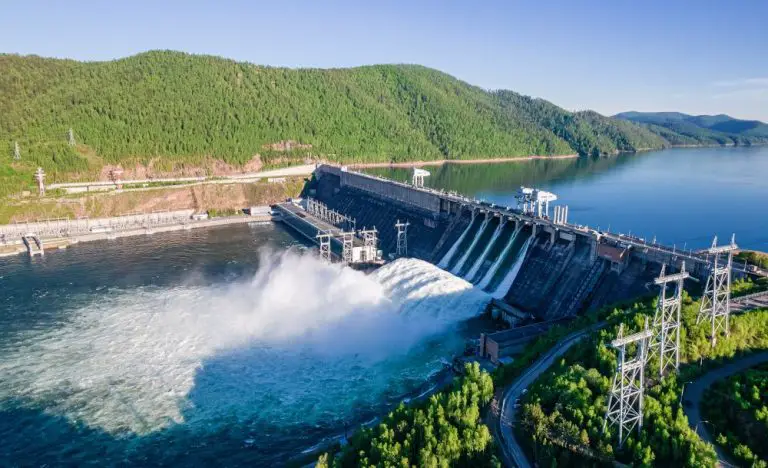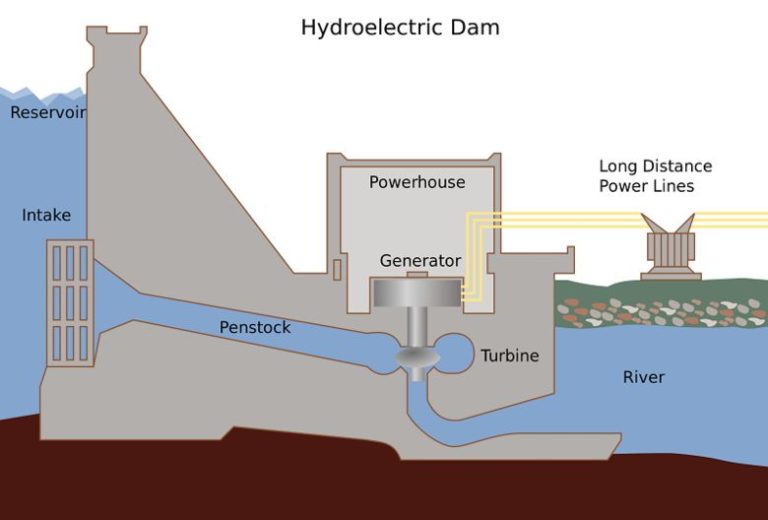Does A Hydroelectric Power Station Have A Reservoir?
1. What is a Hydroelectric Power Station?
A hydroelectric power station is a facility that generates electricity by harnessing the power of moving water. Water flows from a higher elevation reservoir through large pipes called penstocks where it spins a turbine to activate a generator to produce electricity. The moving water rotates the turbines, which converts the kinetic energy of the moving water into mechanical energy. The turbine spins a generator to convert the mechanical energy into electrical energy.
The core components of a hydroelectric station include a dam, reservoir, penstock pipes, turbine, generator, and transformer. The dam stores river water in the reservoir, which is then released through the penstock pipes to reach the turbines. The force of the moving water rotates the turbine blades, spinning a shaft connected to the generator. As the shaft spins inside the generator, it converts the mechanical rotation into electrical energy through electromagnetism. Transformers then step up the electricity to a higher voltage for efficient transmission (Source).
In summary, a hydroelectric power station utilizes the gravitational force of falling or flowing water to generate electricity. The dammed reservoir provides a water source to drive turbine rotation, which activates generators to produce renewable hydroelectric power.
The Role of Reservoirs
A key component of most hydroelectric power stations is a reservoir. The reservoir serves several important purposes in a hydroelectric station:
The reservoir stores water to provide a steady supply to the turbines that generate electricity. By regulating the flow of water, the reservoir allows the hydroelectric station to produce a more constant and reliable amount of power throughout the year, even when natural stream flows vary seasonally.
The reservoir creates hydraulic head – the vertical distance water falls to turn the turbines. The greater the hydraulic head, the more potential energy water has to generate electricity. Storing river water allows it to build up hydraulic head as the reservoir fills.
Reservoirs function as batteries, storing energy in the form of water. When electricity demand is low, excess water can be held back in the reservoir. When demand rises, increased amounts can be released to produce more power. In this way, the reservoir stores potential energy until it is needed.
The elevation of the reservoir water creates pressure that pushes water through tunnels and penstocks down to the power station. The moving water rotates turbine blades, converting the water’s potential energy into kinetic energy to drive an electrical generator.
Overall, the reservoir enables the hydroelectric station to operate more efficiently and flexibly meet electricity needs by controlling water flow and harnessing the potential energy of large quantities of stored water.
Sources:
https://energyeducation.ca/encyclopedia/Hydroelectric_reservoir
https://www.energy.gov/eere/water/types-hydropower-plants
Types of Hydropower Facilities
There are two main types of hydropower facilities: impoundment and run-of-river. The main difference between them is in their design:
Impoundment Facilities
Impoundment facilities use a dam to store river water in a reservoir. Water is released from the reservoir to drive turbine generators that produce electricity. These facilities offer more control over power generation because the dam regulates water flow. Impoundment facilities are able to generate power on demand when electricity is needed. Examples include Hoover Dam and Grand Coulee Dam.
Run-of-River Facilities
Run-of-river facilities do not use large reservoirs for water storage. Instead, they rely on the natural flow of the river to generate electricity. Run-of-river systems divert a portion of a river into a canal where the water spins turbines as it flows downstream and returns to the main river channel. These facilities generate power as the water flows through and have little ability to regulate water flow or store water for on-demand electricity generation. Examples include Chief Joseph Dam and Niagara Falls.
In summary, impoundment facilities rely on dams and reservoirs to control water flow for electricity production while run-of-river facilities utilize a river’s natural flow.
Major Components
A hydroelectric power station consists of several major components that work together to generate electricity from the energy of moving water (https://archive.epa.gov/climatechange/kids/solutions/technologies/water.html). The main parts of a hydroelectric dam include:
- Dam – A dam is built to create a reservoir by blocking and storing a supply of water. The dam height and design controls the amount of water that can be stored.
- Spillway – The spillway is an overflow for releasing excess water from the reservoir. It prevents the dam from being overloaded during heavy rainfalls or spring thaws.
- Reservoir – The reservoir is the body of water held back by the dam. It serves as the hydroelectric system’s “fuel tank” by providing water to power the turbines.
- Intake – The intake is the entrance to the water conveyance system. It may include gates, valves, and screens to control water flow.
- Turbines – Hydraulic turbines convert the kinetic energy of falling water into mechanical energy to spin a generator. Different designs harness the water in different ways.
Together, these components work to control water flow and convert the energy in moving water into electrical power (https://openei.org/wiki/Hydropower/STEM/Resources/Educator_Resources). The reservoir provides a steady supply, while the dam, spillway, intake, and turbines optimize the system.
Generating Power
The core principle behind generating power at a hydroelectric dam is the force created by water flowing from a higher elevation to a lower elevation. The key components include the dam, reservoir, penstock, turbines, and generator (https://www.energy.gov/eere/water/how-hydropower-works).
To generate electricity, the dam is opened to allow water from the reservoir behind it to flow down through large pipes called penstocks. The rushing water spins turbines at high speeds, which in turn spin generators to produce electricity. The kinetic energy of the moving water gets converted into mechanical energy by the turbines, while the generators convert that mechanical energy into electrical energy (https://www.eia.gov/energyexplained/hydropower/).
The amount of electricity that can be generated depends on both the volume of water flow and the vertical distance the water falls. More power can be produced with higher volumes of water falling from greater heights. Dams are strategically built to take advantage of the natural topography in order to maximize this hydraulic head.
Environmental Impacts
Hydroelectric power can have significant environmental impacts, particularly from habitat disruption caused by reservoir creation.[1] Flooding land to construct a reservoir destroys forests, wildlife habitat, agricultural land, and scenic landscapes. It also displaces human populations living in the flooded valley.
Reservoirs and dams drastically change the natural flow of rivers. The fluctuating water levels in the reservoir create erosion and prevent plant growth along the shoreline. Downstream from the dam, the river flow is altered by the operations of the dam, affecting the river’s ecosystems and preventing fish migration.[2] Fish can be injured or killed by passing through hydroelectric turbines.[3] These changes to river systems disrupt freshwater, riparian, and terrestrial habitats.
Mitigation measures can be implemented, such as constructing fish ladders and bypass systems to enable fish migration past dams, regulating water flows to minimize ecosystem disruption, and restoring shoreline vegetation. However, hydroelectric projects inevitably damage the natural river environment to some degree.
[1] https://www.ucsusa.org/resources/environmental-impacts-hydroelectric-power
[2] https://studentorgs.kentlaw.iit.edu/ckjeel/2021/03/29/how-the-northeasts-push-for-hydroelectric-power-demonstrates-the-challenges-and-future-considerations-for-renewable-energy/
[3] https://utilitiesone.com/advantages-and-challenges-of-implementing-hydroelectric-power-systems
Advantages of Hydropower
Hydroelectric power has several key advantages that make it an attractive energy source:
It is a renewable source of energy. The water cycle continuously replenishes the water in the reservoir, allowing hydropower stations to generate electricity indefinitely.
It has relatively low operating costs once a facility is constructed, as there are no fuel costs associated with hydropower generation. The main costs are maintenance and staffing of the facility.
The reservoir behind the dam provides storage capabilities. Water can be held in reserve and released as needed to meet electricity demands. This makes hydropower a flexible, dispatchable source of renewable energy.
Overall, the renewability, low operating costs, and storage capabilities make hydropower a valuable component of a diversified energy mix.
Disadvantages of Hydropower
While hydropower offers many benefits, there are also some notable drawbacks and challenges to consider:
High Upfront Costs – Constructing a hydroelectric dam and power plant requires a huge amount of capital investment upfront. The costs include building the dam structure, turbines, generator, and transmission lines. This high initial cost can make hydropower projects economically unfeasible in some cases.
Drought Risk – Hydroelectric generation relies on a steady flow of water to turn the turbines. During periods of low rainfall and drought, the amount of electricity generated can diminish significantly. This makes hydropower output subject to the variability of seasonal weather patterns and long-term climate change impacts.
Sedimentation – Over time, the reservoir behind a hydroelectric dam fills up with sediment carried by the river. This gradually reduces the storage capacity of the reservoir and the operational life of the dam. Periodic releases of water to flush out sediment may be required.
Overall, while hydropower is a renewable energy source with many benefits, the technology does come with high upfront infrastructure costs, risks from droughts, and sediment buildup challenges. Careful planning and impact assessments are necessary when developing new hydropower projects.
Notable Hydroelectric Projects
Some of the most significant hydroelectric dams in the world include:
Hoover Dam – Located on the Colorado River along the Nevada-Arizona border, the Hoover Dam is one of the largest hydroelectric facilities in the United States with a capacity of 2,080 megawatts (MW). Construction began in 1931 and was completed in 1936. The dam helped provide water and electricity for the development of the Southwest U.S. (https://www.weforum.org/agenda/2022/12/worlds-largest-hydroelectric-dams-renewable-energy/)
Three Gorges Dam – Built on the Yangtze River in central China between 1994 and 2012, the Three Gorges Dam has the largest electricity generating capacity of any hydroelectric facility in the world at 22,500 MW. The dam spans the Yangtze River and stands 185 meters tall and 2,335 meters wide. It regulates river flow, generates power, and helps prevent flooding downstream. (https://www.statista.com/statistics/474526/largest-hydro-power-facilities-in-the-world-by-generating-capacity/)
Other major hydroelectric dams worldwide include Brazil’s Itaipu Dam, Canada’s Robert-Bourassa Dam, Russia’s Sayano–Shushenskaya Dam, and India’s Tehri Dam.
Conclusion
In summary, most large-scale hydroelectric power stations do require a reservoir, which serves as the water source and storage facility for the system. The reservoir is critical for regulating and controlling the flow of water to the turbines that generate electricity. While run-of-river systems without reservoirs are sometimes used for small-scale hydro projects, large dams and their associated reservoirs are central components of major hydroelectric schemes.
Reservoirs serve the vital purpose of providing a reliable water supply that can be dispatched on demand. Storing water behind the dam allows energy generation to be matched with electricity needs, rather than just when water is naturally flowing in the river. Reservoirs also provide opportunities for recreational activities and flood control benefits.
However, large reservoirs also have major environmental impacts, including habitat loss, changes to water quality, and methane emissions from decomposing organic matter underwater. Careful planning and mitigation measures are required to minimize the disruption caused by flooding large areas to construct the reservoirs.
Overall, reservoirs enable the firm and flexible electricity generation that make large hydroelectric projects useful. But they come at an ecological cost that must be carefully weighed against the benefits of clean, renewable power production.

